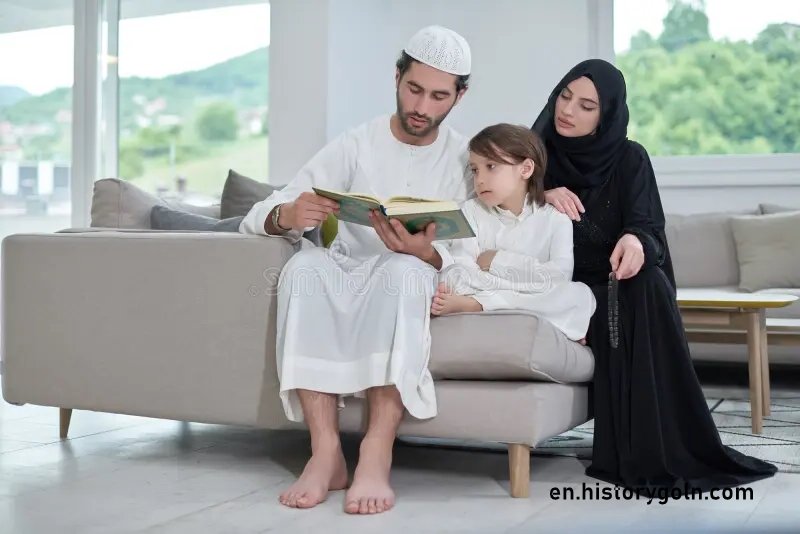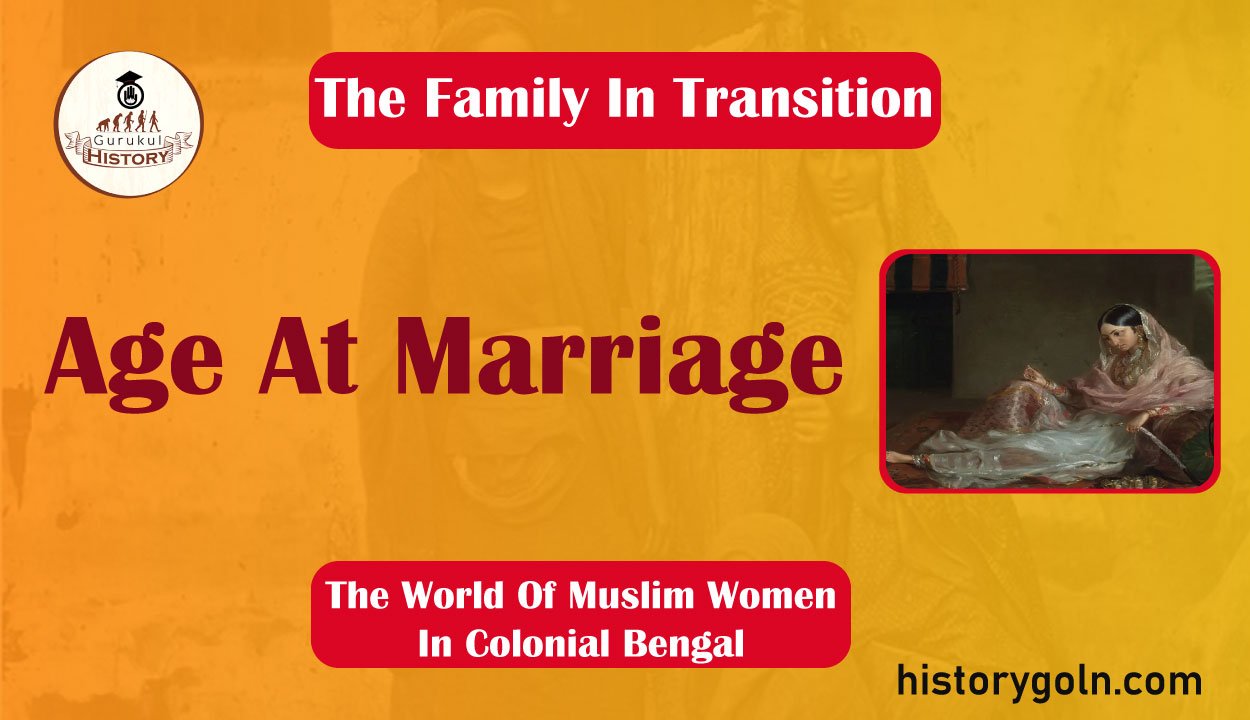Today our topic of discussion is Age At Marriage .
Age At Marriage

The reformer and publicist 1. H. Shirazi raised his voice against social abuses in the form of child marriage in two separate articles published by the conservative periodical Al Eslam in 1917 and 1919. He reiterated the arguments against child marriage made by those before him, seeing in it a hindrance to female education and progress, and the general blossoming of a child’s life.
Considering child marriage specially harmful for girls, Shirazi saw in the custom a lamentable fate for them in the untimely loss of their youth. Marital incompatibility was another of its bad effects and he predicted that the practice would lead to the downfall of the Muslims. In his second piece Shirazi referred to the matter again and recommended that the age of marriage should be 23-24 for boys and 14-15 for girls, 70
Al Eslam published an article by Islambadi in 1919, containing a sum- mary of resolutions adopted at the country conference of the Anjumane Ulema (Meeting of religious leaders) held in 1918 in Patiya and Satkaniya in Chittagong Division.
According to the Anjuman, the social ills that plagued Muslim society were: child marriage, excessive dower (mohr) and trousseau (zevar) and pageantry at wedding ceremonies. Islamabadi also condemned child marriage on medical and economic grounds.71
Among women writers, a liberal stand was taken by Ayesha Ahmed in an important essay published in the ‘Mohila Sankya’ (Women’s issue) of the progressive periodical Sangat (1929).
In discussing the backwardness of the Muslim Community she focussed on ignorance and seclusion of women as prime factors. Ayesha maintained that customs and mores, such as child marriage and untimely motherhood, which acted as barriers to the develop- ment of women as full fledged social and human entities would have to be weeded out as early as possible.
The essay was written sometime after Katherine Mayo had published her controversial book Mother India from USA in 1927. In the book, Mayo depicted Indians as a race debased on account of harmful customs such as child marriage.
The biological and moral retardation she saw in India offered a legitimation of colonial rule. Ms Mayo’s book created great indig nation among many Indians and was seen to have had a bearing on the British government’s subsequent passing of the Child Marriage Restraint and the Age of Consent Acts.
Whereas in the Age of Consent debates of the 1890s, the Raj and the Hindus were the main parties involved, in the debates which raged in the 1920s, the Muslim Community participated in great measure also.
The issue of child marriage became the main focus of reformist, governmental and conservative concern with the announcement of the child marriage restraint bill in 1928. The proposed bill created a great furor in all quarters. Prior to this the government had intervened in Muslim family law once before in 1872 through the Registration of Muslim Marriages Act.
The community immediately grouped into various positions. Their views were aired in the popular press, limericks were composed, petitions add- ressed to the Raj, and even a delegation or two were sent up.
It became apparent that there was a quarter in Muslim society which resented gov ernment interference in indigenous custom. The periodical Sudhakar, pub- lished in the late 19th century by the orthodox Sudhakar group led by men such as Meherullah, Reazuddin Ahmed and Abdul Karim, was now suc- ceeded by a host of periodicals like the Muezzin, Islam Pracharak and Al Eslam.
In its editorial, Muezzin categorically criticized The Age of Consent Bill. In doing so it was actually opposing legislation that was not based on the Sharia or Muslim religious law. The editorial stand was that the mal- practice vis-a-vis marriage in the Muslim society was due to violation of and improper application of Islamic Sharia3 As such the government would do better to implement the Sharia rather than pass the bill.
The same editorial also added: “The Zamindar of Baliadi near Dhaka, Khan Bahadur Kazemuddin Siddiky, has launched a strong protest against the proposed bill and we are at one with him.”74 The following year, Muezzin reiterated its statement:

The grounds for opposition were fear of sexual promiscuity and social disharmony. It was predicted that Hindus and Muslims would never accept the bill because once enacted it would usher in unde- sirable, obscene and licentious acts.
Muezzin was joined by another orthodox periodical Sharat-e Islam in its denunciation of the Bill as indignation at colonial interference in the personal law and lives of subjects for whom the British government other- wise showed little concern. The bill of 1928 was popularly called the ‘Sarda Bill”.
But there were many advocates of women’s emancipation at the time who welcomed the Bill, interference or not. They supported both the Act of 1929 (dealing with age of marriage) and 1930 (dealing with age of sexual inter- course) as positive steps towards eradicating harmful practices of which women were the greatest victims.
The more liberal periodical Masik Mohammadi offered its whole-hearted support to the Child Marriage Bill.
The editorial of the Baishakh issue of Mohammadi (1335 BS) announced that there was no cause to oppose the Bill from the viewpoint of Islam. As consent between two adults was an integral part of a Muslim marriage, the journal felt that the Bill was in keeping with the dictates of Islam. Other liberal papers echoed the sentiment.
The most important thing, however, was that the All India Women’s Conference (AIWC) which had several Muslim representatives in it had been fighting in favour of the Bill. When the Child Marrigae Restraint Act was passed in 1929 the AIWC regarded it as a political triumph. Under the act the solem- nization of marriage between a bride under fourteen and groom under eighteen was made a punishable offence.
While these debates were going on in town and country, among Hindus and Muslims, there were signs of change in marital norms. Statistics and figures are hard to procure.
Nonetheless, the Census of India 1921, does provide us with a brief view of the ‘real’ situation as recorded by the archivists and administrators of the Raj. Imperial statisticians made some rough computations to arrive at an approximate average age at which mar- ringes took place in both communities: “These calculations have given the average age at marriage for females in Bengal as 12.03 years and for males 20.13 years.”
The census report continued that marriages in which the bride was less than 10 and the bridegroom between 15 and 25 were becom- ing rare. It noted a certain rise in the age of marriage and made the following observation which is worth quoting at length:
A comparative analysis based on census data in Bengal, Bihar and Orissa in 1881 shows a comparative rise in age at marriage… There has been a steady rise in age at which marriage takes place… This may have been due in part to the fact that the last few years were hard times but the tendency of public opinion to favour later mar- riage has been a significant one.
The census further noted that though girls would be married off early: …the proportion of girls unmarried between 15 and 20 is still only 55 per mille… the practice of marrying girls very much before puberty is becoming less common… among the Hindus the bhadralok represented by the Brahmans and the Baidyas take the lead in postponing marriage both for males and females.

The Age of Consent issue was one around which lot of other issues accumulated – sexuality, validity of older social system, scriptural injunctions, the authority of orthodox interpreters of religion etc. The various stands taken reflected the ideological contradictions and contes tations that existed side by side, adjusting, accommodating, accepting or clashing as the case may be.
See more:
